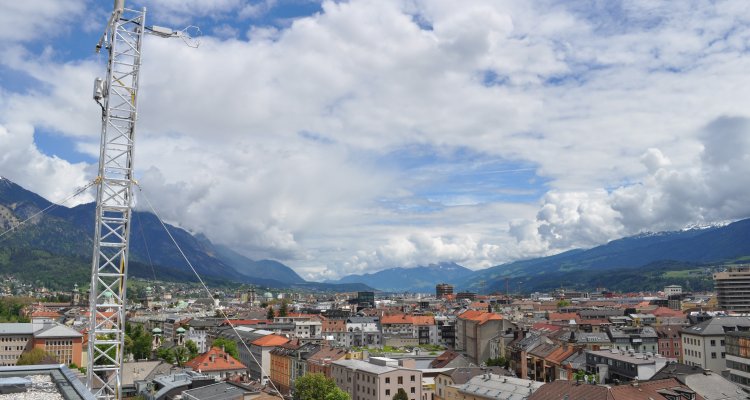Analysis Suggests Revision For Air Quality Models
A fundamental assumption for the scientific prediction of air quality needs to be adjusted. This follows from the analysis of long-term measurements in the urban area of Inssbruck, Austria. Near-Earth air there contained up to 50 per cent less ozone than predicted values. According to Wageningen scientists who contributed to the study lead by Prof. Thomas Karl (University of Innsbruck, Austria), this is related to high nitrogen monoxide levels in the area, emitted by diesel engines. The study’s conclusion may have an impact on future air quality policy.
The Innsbruck Atmospheric Observatory’s tall monitoring tower records 36,000 data points every hour. The concentration of the components that make up the air in the urban area of Innsburck can be continuously monitored by scientists lead by Prof. Thomas Karl (University of Innsbruck, Austria). The data on the chemistry of ozone, nitric oxide and nitrogen dioxide were interpreted by Jordi Vila, professor of Meteorology and Air Quality at Wageningen University & Research, as part of an international team, with significant results. ‘We are experts on interactions between meteorology and atmospheric composition.’
Predictive models need adjustment
The analysis by Vila and his group shows that ozone is converted faster and more into nitrogen dioxide in urban areas with high nitrogen monoxide emissions because of, for example, diesel traffic. This goes against a fundamental assumption used by most air quality models. The concentration of ground-level ozone is overestimated by these models by up to 50 per cent in areas like Innsbruck. They also show that urban traffic contributes less to ‘direct’ emissions of nitrogen dioxide – often simply referred to as nitrogen. Although traffic contributes to nitrogen oxides, direct nitrogen emissions are negligible.
So the chemical reaction between ozone and nitrogen oxides just above the surface is more important for the formation of nitrogen in an urban area like Innsbruck, and ozone levels are much lower than thought. ‘The research shows that nitrogen is mainly formed close to the emission sources by a reaction between ozone and nitrogen oxides,’ Vila stresses. ‘To design appropriate policies to improve air quality, that process needs to be properly investigated.’ In Innsbruck, turbulent air currents carry stronger mixing of the gases, allowing the large amount of nitrogen monoxide to react well with ozone.
Sixty-year-old assumption
Nitrogen is a harmful, pollutant for humans and plants. It can be formed by a reaction between ozone and nitrogen monoxide emissions from diesel engines. In the atmosphere, nitrogen breaks down again into nitric oxide and oxygen, which immediately combines with other oxygen atoms to form ozone. This cycle was described mathematically by Philip Leighton more than 60 years ago, and computer models of air quality work with his simplified ratio to minimise complexity. The data from the atmospheric survey in Innsbruck do not match the expected values, demonstrating that the Leighton ratio can lead to incorrect results.
Nitrogen dioxide concentrations have fallen in recent years, but the reason for this is not yet known. ‘Research based on these advanced measurements in Innsbruck is crucial to find out the origin of nitrogen production and to improve our estimations of nitrogen emissions,’ Vila states. The results of the study have been published in Science Advances.
This research is a collaboration between the National Center for Atmospheric Research (US), Case Western Reserve University (US), Wageningen University & Research (NL) and Luftblick (AT), and was financially supported by the Austrian science fund FWF and the European Space Agency ESA, among others.

